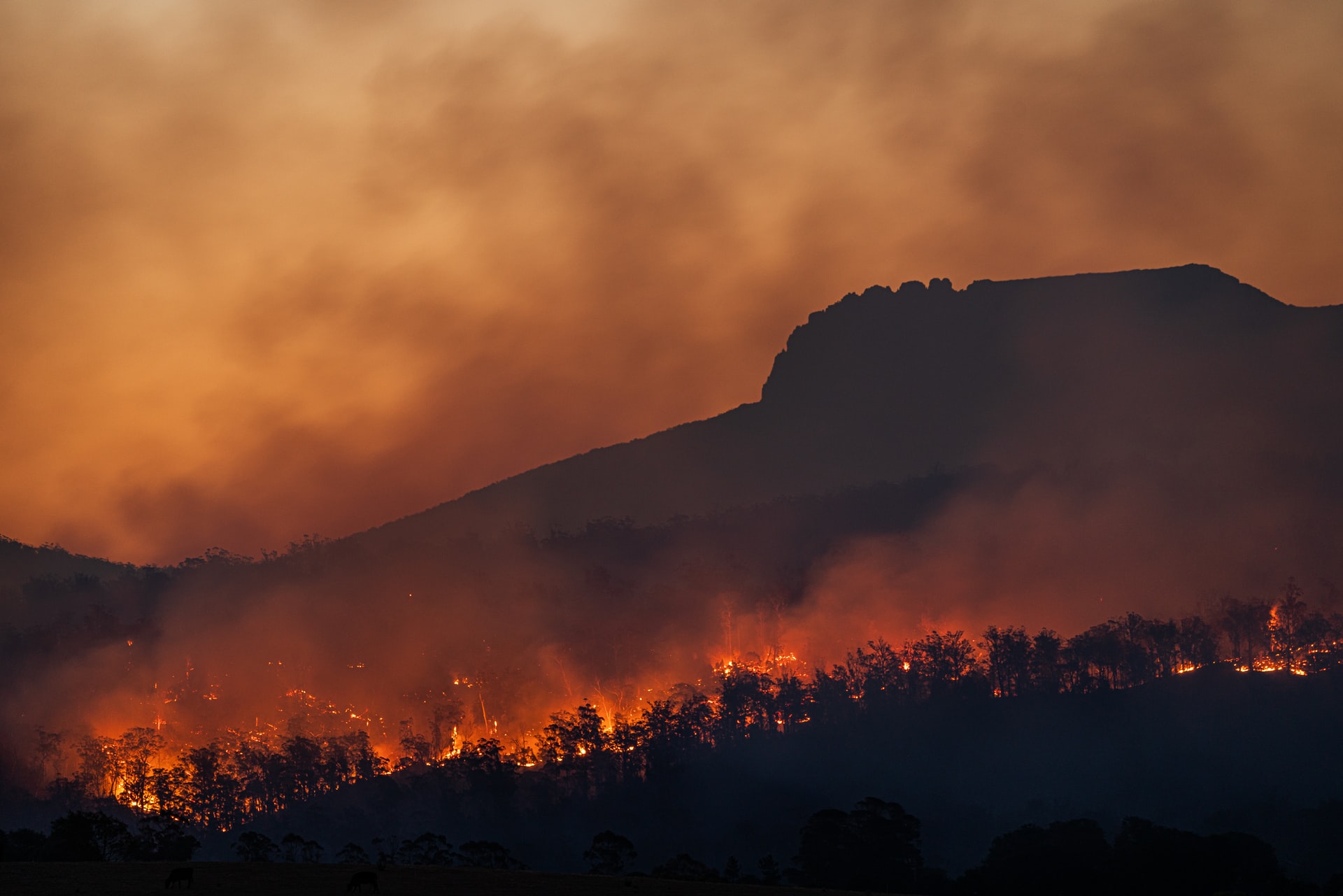The sixth report from the Intergovernmental Panel on Climate Change is unequivocal when explaining the disastrous effect we are having on our planet. It confirms what we already know, that human impact has drastically warmed the environment, ocean and land.
The report clarifies the latest science on climate change, and what to expect over the coming decades. It’s not good news. Without significant decreases in greenhouse gases the international surface area temperatures will exceed the 1.5 C threshold set in the 2015 Paris climate agreement. Even if we do reduce emissions, sea levels will increase throughout this century and most likely for centuries beyond. Severe weather conditions, especially heatwaves and heavy rains will come with greater regularity and severity as temperatures rise.
Unless humans take significant action to decrease greenhouse gas emissions immediately, we’re facing an Earth that is hotter, wetter, and plagued by severe weather events.

Portugal burns during Summer 2021 (pictured). Without hugely significant decreases in greenhouse gases over the next decade, the international surface area temperatures will go beyond the 1.5 C threshold set in the 2015 Paris climate agreement, resulting in many more frequent and severe weather disasters.
We’re currently on course to exceed 1.5 C of warming. In February and March 2021, the Mauna Loa observatory in Hawaii, which has tracked the Earth’s CO2 since the late 1950s, found concentrations of more than 417 parts CO2 per million. Pre-industrial levels were 278 ppm, revealing that humans are well on the way to doubling the concentration of CO2 in the atmosphere, compared with what it was between 1750 and 1800.
The yearly CO2 concentration for 2021 is predicted to be 416.3 ppm, even taking into consideration a fall in emissions in 2020 due to the Covid-19 pandemic. The last time Earth’s atmosphere contained this much CO2 was more than three million years ago, when sea levels were several metres greater, and trees grew at the South Pole.
In 2015, the countries that came together for the Paris Agreement signed up to an ambitious target for keeping worldwide warming listed below 1.5 C. The current IPCC report confirms how hard it will be for the world to stay under that limit, unless we radically slash emissions with immediate effect. The report describes 5 future emission situations, from very high to extremely low emissions levels. In each situation international surfaces are anticipated to hit a minimum of 1.5 C.
Only the extremely low emission situation would result in less than 1.5 C of warming by the end of this century. In that situation, temperatures are likely to overtake 1.5 C of warming in between 2041 and 2060, before lowering to 1.4 C of warming. But realistically, and disturbingly, based upon present emissions, the world is likely to hit between 2.7 C and 3.1 C of warming by 2100.

Realistically, and disturbingly, based upon present emissions, the world is likely to hit between 2.7 C and 3.1 C of warming by 2100.
Severe heat events are already more frequent and severe. We need only think of the disastrous wildfires in Australia, California, or the fires in Europe this summer of 2021 to see that climate change is creating more regular, sustained and extreme weather patterns.
The IPCC reports that since 1970, global surface temperatures have risen faster than in any 50-year-period over the last 2,000 years, with 2016-2020 being the hottest five-year duration recorded; and the main causes of these changes in temperature are human-released greenhouse gases.
Another harrowing illustration of climate change is that the average size of vertebrate populations (mammals, fish, birds and reptiles) declined by 60 percent between 1970 and 2014, according to a report published by the WWF.
Climate change is responsible for this massive decline. It is believed to be the third biggest driver of biodiversity loss, behind physically changing the use of land and sea itself, and overexploitation of natural resources. Even with under a 2 degrees Celsius warming scenario, five percent of plant and animal species will be at danger from extinction.

The average size of vertebrate populations (mammals, fish, birds and reptiles) declined by 60 percent between 1970 and 2014, according to a report published by the WWF, this is as a direct result of human-caused climate change.
Here at Ryze Hydrogen we’ve spent the last two years campaigning for the Government to release a Hydrogen Strategy. Amongst other things this document is a roadmap, which lays out the policy framework within which Ryze Hydrogen, and numerous other companies in our sector, can continue to develop clean hydrogen energy projects to help decarbonise our economy. The Strategy has been published, and although this was met with positivity, it is clear we must do a huge amount more in order to meaningfully tackle this emissions crisis.
We’re already seeing huge savings in harmful CO2 emissions that just 33 Wrightbus Hydrogen buses are contributing to cities across the UK. Boris Johnson promised 4,000 zero emission buses on UK streets. However, we are nowhere near to even starting on the journey to achieving this number, and therefore to decarbonising our public transport systems.
We need far greater commitment for developing the infrastructure needed to support the full raft of hydrogen applications waiting in the wings to clean up our atmosphere: hydrogen transport, hydrogen homes and hydrogen industry for starters. This is a huge and unique opportunity, to reduce our emissions through the use of clean hydrogen, whilst creating and sustaining thousands of green jobs when our economy needs it most.
For more about Ryze Hydrogen click here.






